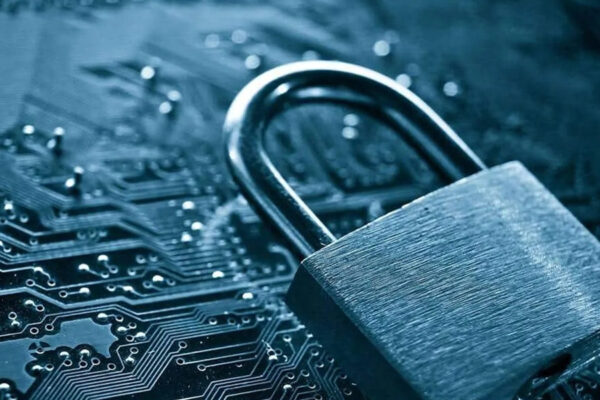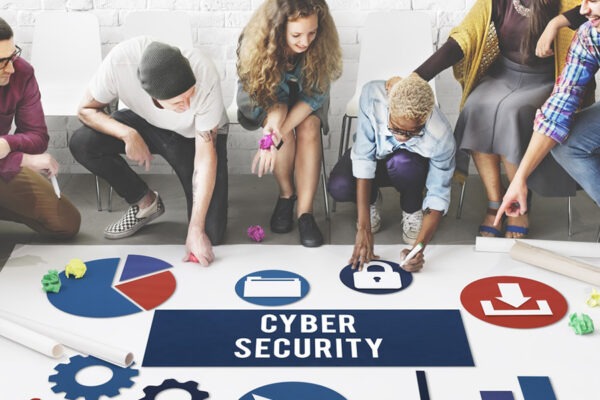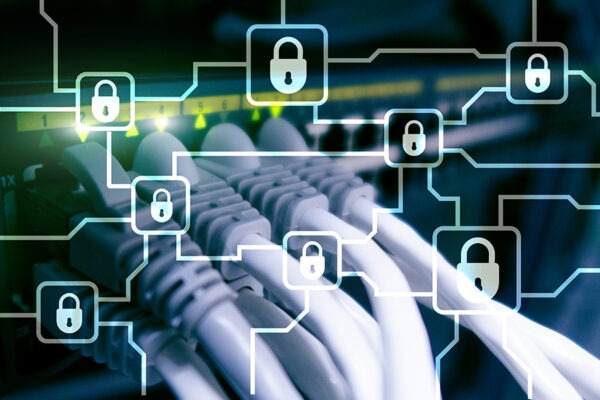The education sector has recently witnessed a tremendous shift towards digitalization and online learning. While these technological advancements have brought significant benefits, they have also exposed the education industry to the ever-growing threat of cyberattacks and made it a prime target for hackers. As a leader in cybersecurity, we firmly believe that investing in robust education cybersecurity measures is imperative for educational institutions to safeguard their sensitive data, intellectual property, and the privacy of their students and staff.

The Soaring Cyber Attacks in the Education Sector
With the increasing reliance on digital infrastructure, the education sector has become a prime target for cybercriminals. These malicious actors exploit system vulnerabilities to steal valuable data, disrupt operations, or cause financial harm. From K-12 schools to higher education institutions, all are at risk of cyber attacks.
One prevalent threat in the education sector is ransomware attacks. In such attacks, hackers infiltrate the institution’s network, encrypt crucial data, and demand a ransom to provide the decryption key. A successful ransomware attack can lead to significant data loss, financial burden, and reputational damage.
Moreover, there are phishing attacks, where cybercriminals trick users into revealing sensitive information through fraudulent emails or websites, such as login credentials or personal data. With their vast student and staff data and databases, these institutions are prime targets for such attacks.
Additionally, data breaches targeting university systems pose a severe concern. Education institutions store vast amounts of personal data, including Social Security numbers, addresses, and financial information. If this data falls into the wrong hands, it can lead to identity theft and other cyber-related crimes.
The Consequences of Ignoring Cybersecurity
Failing to invest in robust cybersecurity measures can severely affect universities. Apart from the immediate financial losses from cyberattacks, institutions may suffer long-term damage to their reputation and credibility. Parents, students, and staff trust colleges and universities to safeguard their private and personal information well; a data breach can shatter that trust.
Notably, the compliance aspect is also critical. Many countries have implemented data protection regulations, such as the General Data Protection Regulation (GDPR) in Europe or the California Consumer Privacy Act (CCPA) in the United States. Non-compliance with these regulations can lead to substantial penalties and legal actions.
6 Benefits of Investing in Education Cybersecurity
Investing in cybersecurity for educational institutions is not just a reactive measure; it also brings several proactive benefits to the education sector. Let’s explore some of the advantages that colleges and universities can reap from making this investment:

1. Data Protection and Privacy
Data lies at the core of education, encompassing sensitive information about students, faculty, research, and administrative operations. By implementing robust cybersecurity measures, such as state-of-the-art encryption, multi-factor authentication, and secure firewalls, universities and colleges can shield their data from unauthorized access and data breaches. This not only protects the personal information of individuals but also safeguards valuable information and research data from falling into the hands of cybercriminals.
2. Preventing Disruptions to Learning
Learning institutions thrive on a seamless flow of knowledge and engagement between educators and students. However, cyberattacks can wreak havoc on the normal functioning of colleges and universities. Disruptions caused by cyber incidents, such as distributed denial-of-service (DDoS) attacks, can lead to class cancellations, system downtime, and logistical challenges. Investing in cybersecurity ensures continuity in learning by safeguarding critical infrastructure, student data, and communication channels, thereby minimizing the impact of potential cyber incidents on the learning process.
3. Maintaining Reputation and Trust
The education sector stands on pillars of trust and credibility. Parents, students, and stakeholders put their faith in the education system to provide a safe and secure learning environment. A single data breach or cyber incident can severely tarnish an institution’s reputation, losing trust and credibility among its stakeholders. By adopting a solid cybersecurity posture, the education sector can demonstrate its commitment to safeguarding sensitive information, which preserves its reputation and trust in the community.
4. Compliance with Data Regulations
As data becomes increasingly valuable and susceptible to misuse, governments and regulatory bodies have introduced stringent data protection regulations to ensure the safety and privacy of individuals. Colleges are no exception to these regulations, and compliance is not optional. A robust cybersecurity framework helps colleges and universities adhere to data protection laws, such as the General Data Protection Regulation (GDPR) in Europe and the Family Educational Rights and Privacy Act (FERPA) in the United States. Compliance protects institutions from potential legal consequences and hefty fines and reinforces their commitment to safeguarding data and privacy.
5. Securing Intellectual Property
Universities are hubs of innovation and research, contributing to advancements in various fields. The IP generated through research projects and innovative initiatives is invaluable and must be protected at all costs. Cybersecurity measures, such as access controls, data encryption, and secure networks, ensure that IP remains confidential and exclusive to the institution. This protection fosters an environment of trust and encourages researchers and academics to pursue groundbreaking work without fear of data theft or espionage.

6. Cultivating a Cybersecurity Culture
An institution’s cybersecurity is only as strong as its weakest link. Human error and lack of awareness can often lead to security breaches. Investing in cybersecurity also entails fostering a cybersecurity culture within the educational community. By providing regular cybersecurity training and awareness programs, universities can empower students, staff, and faculty to recognize and thwart potential cyber threats. A heightened cybersecurity awareness leads to responsible digital practices, making the institution collectively less susceptible to cyberattacks.
The 6 Best Practices for Cybersecurity in Education
Educational institutions, with their vast repositories of sensitive data and intellectual property, are prime targets for threats. To counter these ever-evolving dangers, a proactive approach to cybersecurity is vital. By adopting industry best practices, colleges and universities can bolster their cybersecurity defenses and protect their digital assets from malicious actors. Let’s delve into the six best practices that are crucial for ensuring a robust cybersecurity posture in the education sector:
1. Regular Cybersecurity Training
The human factor remains a significant vulnerability in any cybersecurity framework. As technology advances, so do cybersecurity threats, making it essential for colleges and universities to invest in regular cybersecurity training for their staff and students. Institutions can raise awareness about the latest threats, cyber attack techniques, and phishing scams by conducting comprehensive training sessions. Educating users on safe digital practices, such as strong password management and identifying suspicious emails, equips them to become the first line of defense against cyber security breaches. This ongoing education ensures that the educational community stays vigilant and can respond effectively to potential security breaches and mitigate cyber threats security.
2. Security Audits and Risk Assessments
Educational institutions must conduct periodic security audits and risk assessments to build a robust cybersecurity infrastructure to safeguard student data. These assessments help identify vulnerabilities and potential weak points in the institution’s digital infrastructure by conducting in-depth evaluations of their networks, systems, and applications. Regular audits provide insights into emerging threats and evolving attack vectors, allowing the education system to proactively address security gaps before cybercriminals exploit them.

3. Robust Network Security
A strong and resilient network security architecture is paramount in safeguarding data transmission and communication within educational institutions. Implementing state-of-the-art firewalls, intrusion detection systems (IDS), and intrusion prevention systems (IPS) creates multiple layers of protection against cyber threats. Firewalls act as a barrier, preventing unauthorized access to the network, while IDS and IPS actively monitor network traffic for suspicious activities and block potential threats in real-time. Furthermore, encrypted communication channels, such as Virtual Private Networks (VPNs), ensure that sensitive data remains secure during transmission.
4. Data Backup and Recovery Plans
Quick data recovery is crucial to minimizing the impact and downtime of cyber attacks or data breaches. Colleges and universities must maintain secure and redundant data backups to ensure data integrity and availability. Regularly backing up critical data to offline storage, such as tape drives or secure cloud services, provides an additional layer of protection against ransomware attacks that can encrypt data on network-connected devices. A robust data recovery plan in a cyber incident enables institutions to swiftly restore essential operations and maintain continuity in their educational endeavors.
5. Regular Software Updates and Patch Management
Outdated software and applications are common entry points for cyber attackers. Hackers exploit known vulnerabilities that software vendors have not patched. Educational institutions must prioritize regular software updates and patch management to ensure that all systems and applications run on the latest and most secure versions. This practice minimizes the risk of exploitation and significantly enhances the overall cybersecurity posture. Automated patch management tools can streamline this process, making it easier for institutions to update their software with the latest security fixes.
6. Collaboration with Cybersecurity Experts
Colleges and universities may not have the in-house expertise to deal with sophisticated cyber threats. Partnering with reputable cybersecurity firms or experts can bridge this gap and provide valuable insights into emerging threats and cutting-edge solutions. Cybersecurity experts can thoroughly assess the institution’s security infrastructure, recommend tailored cybersecurity strategies, and provide continuous support in maintaining a secure digital environment. Such collaborations enable colleges and universities to stay abreast of the rapidly changing cyber threat landscape and effectively implement proactive measures to protect their data and infrastructure.

Discover Superior Cybersecurity Services with EIRE Systems
The education sector must recognize the urgency of investing in cybersecurity, as a successful attack costing thousands will disrupt your educational institute’s ability to run smoothly. The escalating cyber threats pose significant risks to college students, universities, stakeholders, and the broader community. EIRE Systems can implement robust cybersecurity measures to safeguard data so that colleges and universities can protect students and their data, maintain their reputation, and ensure uninterrupted learning experiences for their students.
Embrace a proactive cybersecurity approach that safeguards against potential attacks and instills a culture of security awareness among students and staff with our range of IT services. Secure your education institutions’ data by contacting us today to get started.
About the Author: EIRE Systems
EIRE Systems is a leading independent provider of professional IT, AV and Access Security services to the financial, insurance, manufacturing, health care, retail, construction, hospitality, commercial real estate, legal, educational and multinational sectors in Japan and throughout the Asia Pacific region. EIRE Systems has expertise across a wide spectrum of Information Technologies, with a track record for successfully completing hundreds of assignments since its establishment in 1996.


